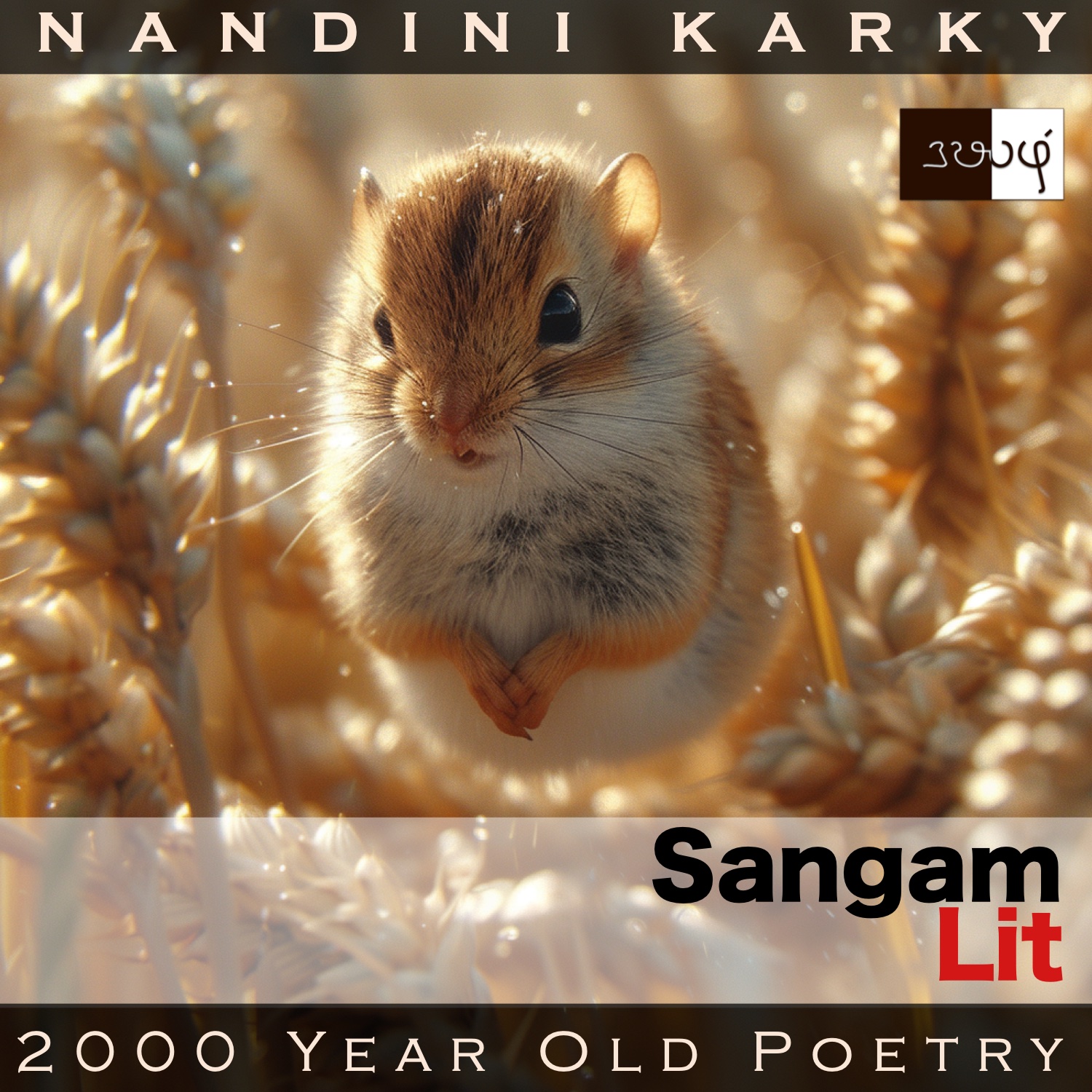Podcast: Play in new window | Download
Subscribe: Apple Podcasts | Spotify | Amazon Music | Android | iHeartRadio | TuneIn | RSS | More
In this episode, we perceive dynamic scenes in a town as portrayed in Sangam Literary work, Puranaanooru 321, penned by the poet Uraiyoor Maruthuvan Damodaranaar. Set in the category of ‘Vaagai Thinai’ or ‘Victory’, the verse guides a bard in the direction of a leader’s hospitality.

பொறிப் புறப் பூழின் போர் வல் சேவல்
மேந் தோல் களைந்த தீம் கோள் வெள் எள்
சுளகிடை உணங்கல் செவ்வி கொண்டு, உடன்
வேனில் கோங்கின் பூம் பொகுட்டு அன்ன
குடந்தை அம் செவிய கோட்டு எலி ஆட்ட,
கலி ஆர் வரகின் பிறங்கு பீள் ஒளிக்கும்,
வன் புல வைப்பினதுவே சென்று
தின் பழம் பசீஇ ……….னனோ, பாண!
வாள் வடு விளங்கிய சென்னிச்
செரு வெங் குருசில் ஓம்பும் ஊரே.
Looks like we are in the middle of songs with intricate place descriptions. The poet’s words can be translated as follows:
“The fighting male of a quail with a spotted rear bides its time to steal the de-husked sweet white sesame seeds drying on the winnowing pan, and then chases a rat, which has ears akin to the seed-filled flower clusters of the ‘Kongum’ tree in summer, making the rat hide behind the luxuriant and ripe millet crop ears in the drylands region. Go thither and savour the sweet fruit for your hunger…. O bard! For this is the town ruled by the king, who seeks battles with desire, the one who is crowned with a head glowing with sword scars many!”
Let’s delve into the details. The poet starts by zooming in his camera on the spots on a bird’s back, and as he zooms out little by little, we learn that this bird is a quail, a male one that has been trained to be a part of bird fights, similar to the cock fights held in some parts of the world even today. This quail is seen hanging around the front yard of a house, waiting for the right time to sneak in and peck away at the white sesame seeds that have been laid out to dry on a winnowing pan. After eating away to its full, next it’s seen chasing a rat in the fields. Now, to describe the ears of this rat, the poet brings forth a simile from the plant world, the flower of a ‘Kongam’ tree or ‘Buttercup tree’, one that blooms in summer. It sure is an eye-catching flower among flowers! That rat, fearing this quail, runs and hides behind the thick crop ears of millets in that field, the poet continues, adding that all this is happening in a dry lands region, called as ‘Punjai’ in Tamil, where only crops such as millets that require scanty water can grow.
Returning to the verse, we find the poet sharing all these details with a bard and asking him to go savour fruit in this town. Some lines are missing following these words but these are likely to be words guiding the bard to this town. The poet concludes with the words that this town is ruled by a king, who loves fighting in battles and is one who has a head covered in battle scars. This sounds like a society that saw beauty in a male in the form of scars gained in the battlefield. Leaving aside this repeated glorification of war, we can appreciate the skills of observation of this poet as he tracks down a quail, observes its antics in the home and field, and then follows the trail of rat in a millet field, taking us on a delightful run in those spaces of the past!




Share your thoughts...